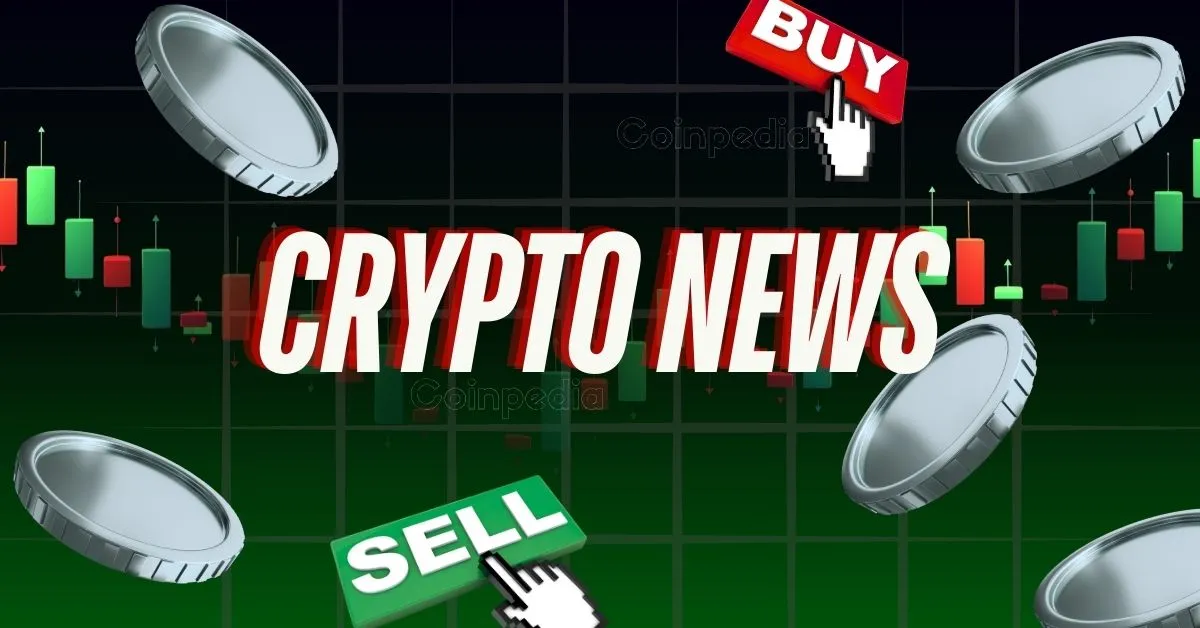
The Ethereum Shapella upgrade has been officially executed, providing an opportunity for Ethereum validators to withdraw their staked Ether.
The upgrade has been welcomed by the crypto community enthusiastically.
Zhuling Chen, the CEO of blockchain service company RockX, has expressed his optimism about the development, saying that it would change the landscape for ether token holders.
The Shapella upgrade is the major update the Ethereum blockchain has witnessed in its recent history.
If you are a cryptocurrency enthusiast, this development must be something that can trigger your curiosity.
Let’s try to comprehend the development better!
A Quick Overview: Ethereum Blockchain
Here we are trying to explore a development that has happened in the Ethereum blockchain.
Better is to start the discussion from the point ‘what is Ethereum blockchain’, as it is always better to approach a concept from its bottom.
Ethereum is not just any ordinary blockchain. It’s a powerful, open-source platform that allows developers to create and execute smart contracts and decentralized applications (dApps).
Unlike its predecessor, Bitcoin, Ethereum is not just a digital currency, but rather a versatile tool for building innovative solutions to real-world problems.
At its core, Ethereum is a decentralized database that is spread across a global network of nodes.
What sets it apart is its ability to automate complex financial and other transactions through the use of smart contracts.
These self-executing computer programs are triggered by specific conditions, allowing for a level of automation and trust that was once only possible through intermediaries.
Ether, the native cryptocurrency of the Ethereum network, plays a crucial role in powering the platform. It’s used to pay transaction fees and incentivize miners to secure the network, ensuring its integrity and reliability.
The Ethereum ecosystem is a constantly evolving one.
With the latest upgrade, the ecosystem has entered another crucial stage of evolution.
Shapella Upgrade: What You Don’t Know
The Shapella upgrade is the talk of the town.
In every discussion platform, this topic is being discussed aggressively and enthusiastically at this juncture.
Why is this development considered as crucial? Why, all of a sudden, has this become a hot topic of discussion?
Of course, there must be a solid reason.
Shapella upgrade, also known as the Shanghai Capella upgrade, marks a significant milestone in the Ethereum blockchain’s transition from Proof-Of-Work to Proof-Of-Stake mechanism after “The Merge”.
Before you proceed further, in order to digest the concept better, you must understand one important thing the Ethereum network consists of two layers: the execution layer and the consensus layer, previously known as the main layer and the Beacon Chain, respectively.
The upgrade involves both layers, with Shanghai focused on the execution layer and Capella focused on the consensus layer.
It enables validators to withdraw stETH tokens on the Beacon chain, which currently holds over $18 million worth of ETH tokens staked since 2020.
In addition to this, the upgrade includes vital changes in the execution and consensus layers along with enhancements to the Engine API.
Although there are several Ethereum Improvement Proposals (EPIs) included in the upgrade, EIP-4895 is particularly significant.
EIP-4895: What Validators Needs To Know
Now, you know that the Ethereum blockchain has executed a crucial upgrade, which has the calibre to redefine the course of the platform and also can determine the future of the network.
This stage, the big question that requires clarity is why EIP-4895 is more significant.
Through EIP-4895, the network allows validators to unlock their ETH.
Generally speaking, the purpose of this upgrade is to enable staking validators to withdraw their funds for the first time.
At present, $34 billion or 18.14 million Ether is locked into the Beacon chain contract, which is the proof-of-stake chain that runs in parallel with the current proof-of-work chain.
Post the update, validators would be able to withdraw their funds, subject to specific rules and thresholds built into the upgrade.
How The Platform Amassed This Much ETH
It’s not suitable to take this discussion forward before addressing your confusion regarding the fund amassed.
To explain this concept, you must understand why ETH transitioned to a proof-of-stake network from its original proof-of-work network.
Ethereum initially launched as a proof-of-work network similar to Bitcoin, but it had the foresight to transition to a proof-of-stake network, which was considered more advanced and secure.
In Q4 of 2020, a deposit contract was launched for Ethereum stakers, allowing anyone to participate in the staking process by locking up a minimum of 32 Ethere.
However, for the average Ethereum user, the minimum deposit of 32 ETH was too large, making it difficult for them to participate in staking,
To address this issue, some services, known as liquid staking derivatives platforms, acted as intermediaries, allowing users with small deposits to participate in Ethereum staking.
As a part of this development, Ethereans were unable to withdraw their coins from deposit contracts, resulting in a massive accumulation of over 18 million ETH or $33.8 billion in equivalent value.
What this amount actually reflects is the confidence that Ethereum holders have in the platform’s future and the potential for staking rewards.
The Impact Of The Upgrade
The interesting point is that the upgrade has the potential to impact both the execution and consensus layers of the network.
The Shapella upgrade is the combination of the Shanghai upgrade and the Capella upgrade.
The focus of the Shanghai upgrade is upgrading the network’s execution clients. Meanwhile, the focus of the Capella upgrade is upgrading the consensus clients.
Execution clients are responsible for executing smart contracts and transactions, while consensus clients are responsible for validating transactions and creating new blocks.
The update is less likely to impact average ethereum users.
Meanwhile, the development requires validators to upgrade their clients to ensure they can continue to participate in the proof-of-stake consensus mechanism.
Understanding Proof-Of-Stake & Proof-Of-Work
In this short discussion, a few complex concepts have been introduced to you. One such concept must be ‘Proof-Of-Stake’.
You don’t have to think too much to understand this concept.
To learn this concept, you should understand how this network validates transitions and creates new blocks.
The network uses a proof-of-work consensus mechanism, which requires miners to solve complex mathematical problems to validate transactions and create new blocks.
However, the network is moving towards a proof-of-stake consensus mechanism, which relies on validators who lock up a certain amount of Ether to secure the network and validate transactions.
The Future of Ethereum Post The Upgrade
Maybe, you are curious to know what this upgrade says about the future of Ethereum.
The upgrade has been welcomed by the crypto community wholeheartedly.
A total of $34 billion or 18.14 million ETH is currently locked in the Beacon chain contract, which is now eligible to be withdrawn.
This represents the first significant chunk of staked ETH supply to hit the open market.
It’s likely that some portion of this will be sold.
The impact of this upgrade on the price of ETH is likely to be minimal, as a significant portion of the staked ETH are expected to be re-staked.
Ethereum has rallied 6.1 per cent in the week leading into the upgrade, indicating bullish sentiment in the market.
How withdrawal of ETH works?
The most sensational question about this topic at this juncture is ‘how withdrawal of ETH works’.
Maybe, deep inside your mind, you also have the same doubt.
Let us bring the spotlight of knowledge over the doubt.
Currently, there are more than 18.2M ETH deposited on the Beacon Chain, with an additional 1M ETH in accrued staking rewards since staking went live.
Validator exits undergo a full withdrawal process, while accrued rewards are eligible for partial withdrawals, which are expedited.
Full-withdrawals have to go through two queues, withdrawal and exit, which serve as a delay before becoming fully liquid.
Around 57,000 ETH are eligible to be withdrawn every day through full withdrawals at this juncture.
In the first 54 days post the upgrade, over 3.3 ETH can move to exit the Beacon Chain.
Meanwhile, partial-withdrawals or staking rewards can become liquid near instantaneously and bypass the queues.
However, it will take about 4.75 days post-Shapella for accrued staking rewards to be withdrawn.
How Will This Affect Liquid Staking Derivatives (LSDs)
You may be wondering whether the upgrade would affect LSD holders in any way.
So far, no analyst has suggested that Shapella would affect LSD holders much.
This implies that LSD holders can still trade LSD for other digital currencies and use them in supported DeFi protocols.
In other words, LSDs like stETH, rETH, frxETH, and sETH2 would still be equivalent to 1 ETH.
Meanwhile, there are reports that not all issuers would allow withdrawals immediately.
Lido, the largest staking entity, would not allow stETH withdrawals until around mid-May due to audits.
Inference
If the price performance of Ether is any indication, the long-awaited upgrade turned out to be a non-event, as many had predicted.
Within minutes after the upgrade, Ethereum saw only a 1 per cent increase in price, with minimal fluctuations as it hovered around the $1,900 mark.
There are enough indications to assume that the future of Ethereum is bright.
Trust with CoinPedia:
CoinPedia has been delivering accurate and timely cryptocurrency and blockchain updates since 2017. All content is created by our expert panel of analysts and journalists, following strict Editorial Guidelines based on E-E-A-T (Experience, Expertise, Authoritativeness, Trustworthiness). Every article is fact-checked against reputable sources to ensure accuracy, transparency, and reliability. Our review policy guarantees unbiased evaluations when recommending exchanges, platforms, or tools. We strive to provide timely updates about everything crypto & blockchain, right from startups to industry majors.
Investment Disclaimer:
All opinions and insights shared represent the author's own views on current market conditions. Please do your own research before making investment decisions. Neither the writer nor the publication assumes responsibility for your financial choices.
Sponsored and Advertisements:
Sponsored content and affiliate links may appear on our site. Advertisements are marked clearly, and our editorial content remains entirely independent from our ad partners.








